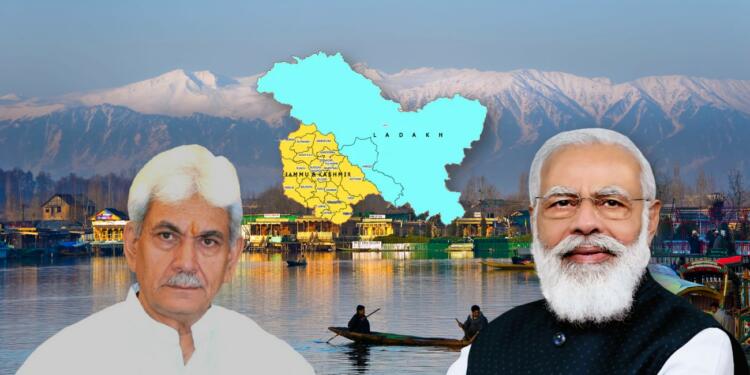- In the last few years, especially after the abrogation of Article 370 and bringing the erstwhile state under the administration of the Union government, the Modi government has focused on the development of the Union territory of Jammu & Kashmir.
- Manoj Sinha-led government has taken many steps to ease up the investment in the union territory, including a one-stop portal for regulatory clearances.
- J&K has a huge opportunity for tourism and real estate, given its scenic natural beauty and weather conditions. The per capita income of the union territory can grow manifold riding on tourism, just like Himachal Pradesh and Uttarakhand.
- The Jammu and Kashmir government has signed 39 Memoranda of Understanding (MOUs) to boost employment and per capita income.
In the last few years, especially after the abrogation of Article 370 and bringing the erstwhile state under the administration of the Union government, the Modi government has focused on the development of the Union territory of Jammu & Kashmir. Under the leadership of Manoj Sinha, the government of J&K is leaving no stone unturned to bring investment in the region.
The Union Home Minister virtually launched District Good Governance Index and said, “The District Good Governance Index is a milestone and it is expected that it will provide a robust framework for evidence-based assessment of the performance of all the districts in Jammu & Kashmir.”
He also talked about the massive investment that the region has received in the last few years. “Prime Minister Narendra Modi has made the best industrial policy ever for Jammu and Kashmir, under which investments of about Rs 50000 crore is going to come in Jammu and Kashmir and that will provide employment to five lakh youths,” he said.
Manoj Sinha-led government has taken many steps to ease up the investment in the union territory, including a one-stop portal for regulatory clearances. After preparing the groundwork, a few months a real estate investment summit was organized, and another similar summit will be held in Srinagar in May 2022.
The National Real Estate Development Council, a self-regulatory body under the Ministry of Housing and Urban Affairs, is making big efforts to ensure the development of the real estate sector in the union territory. The body is led by veteran real estate mogul Niranjan Hiranandani of Hiranandani group, and under his leadership, the body will ensure that the top private real estate developers across the country start the project in the state.
J&K has a huge opportunity for tourism and real estate, given its scenic natural beauty and weather conditions. Locations in the union territory can also be developed as summer houses for the affluent people from neighbouring states like Punjab, Haryana, and Delhi UT. The per capita income of the state can grow manifold riding on tourism, just like Himachal Pradesh and Uttarakhand. However, so far these developments were not possible given the discriminatory laws against investment from other parts of the country in the union territory.
But with the abrogation of Article 370 and good governance by the Manoj Sinha administration, the UT is poised to become investment heaven for industrialists and HNIs. The Jammu and Kashmir government has signed 39 Memoranda of Understanding (MOUs) to boost employment and per capita income.
The state of health, education, and other socio-economic condition of Jammu & Kashmir are better than many other well-off states of the country. The union territory has far higher social spending than the rest of the country. The per capita social spending in J&K is around 12,000 rupees per year while for the rest of the country it is only 8,500 rupees.
Read More: Investments and Jobs – PM Modi has big plans to make Jammu and Kashmir a prosperous state
But Jammu & Kashmir is one of the most pampered UTs of the country with 73.6 percent of the total revenue comes from the central government while the UT generates only 26 percent of total revenue. So, the union territory is better compared to other North Indian peers because the central government spends a lot. As per an article published by The Hindu on July 24 written by TCA Sharad Raghavan, J&K gets 10% of central funds with only 1% of the population.
As Article 370 is abolished and private investment in the union territory increases, the UT would not need to be dependent on the central government. It could generate a majority of the revenue through its own resources as the industrial and agricultural activity in the union territory increases.






























Wonderful move.